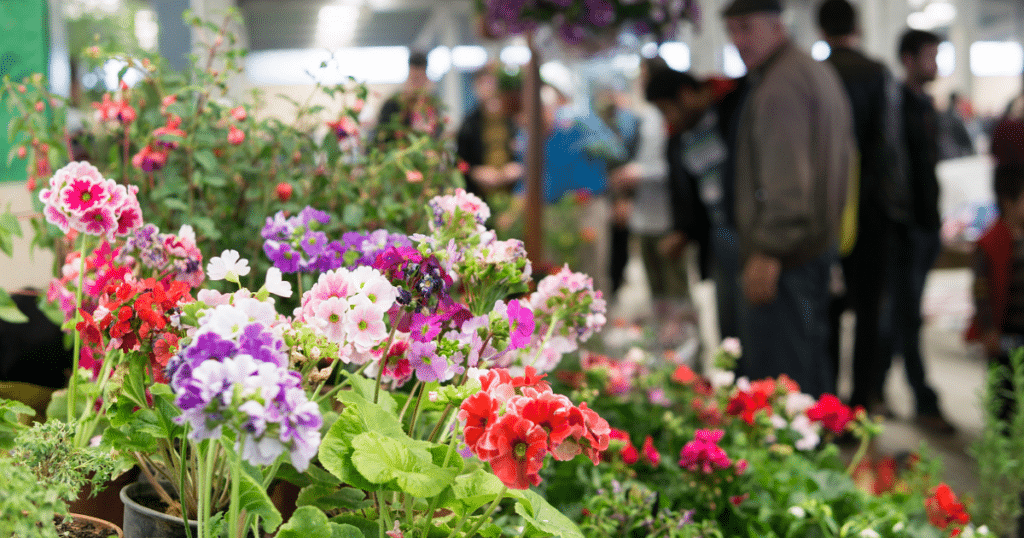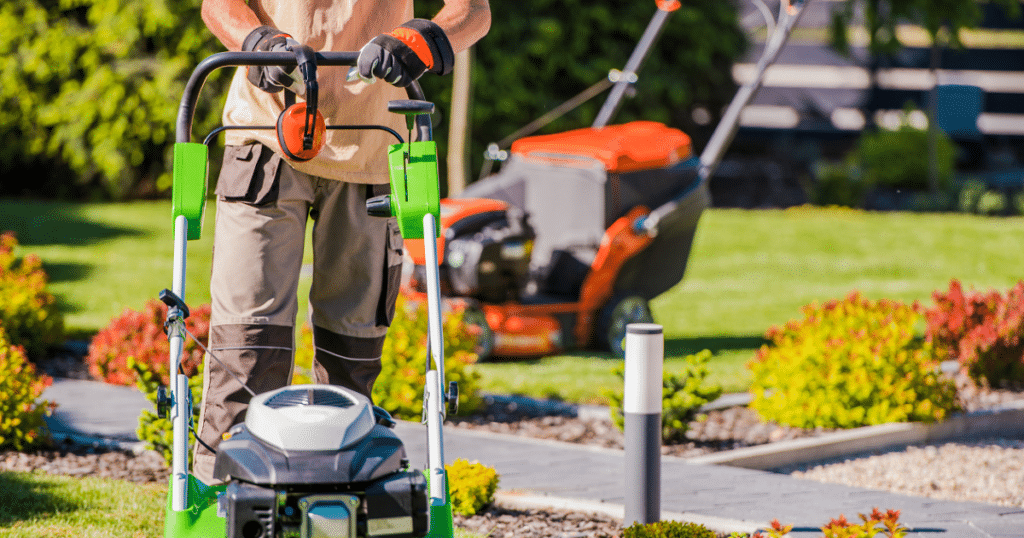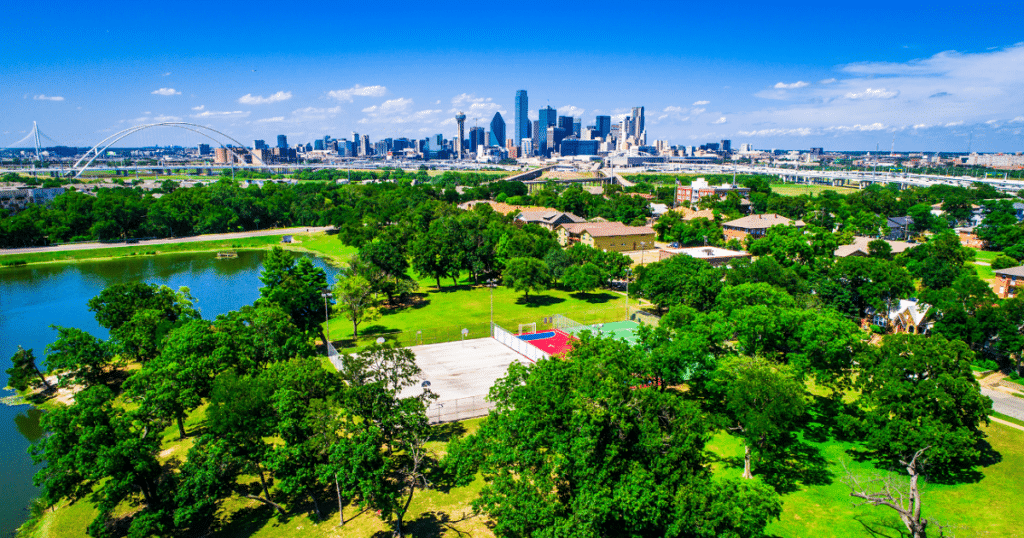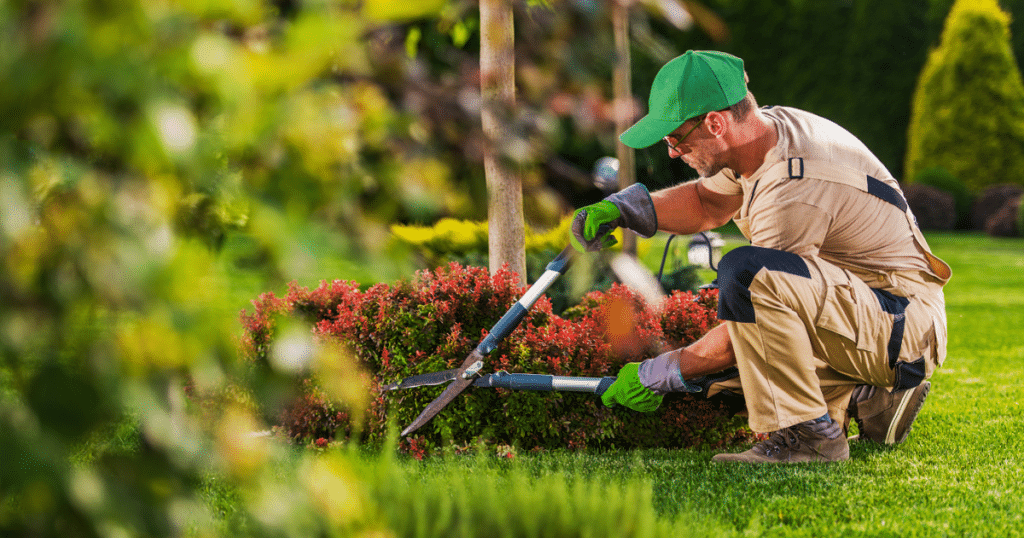
Introduction
Prepare to embark on a whimsical journey through the enchanting realm of landscaping. Join us as we uncover the hidden wonders and mystical abilities of those mystical beings known as landscapers. From sculpting nature’s canvas to creating awe-inspiring outdoor masterpieces, we’ll unravel the secrets behind the wizardry of these garden whisperers. So, dust off your gardening gloves, sharpen your imagination, and get ready to delve into the captivating world of what does a landscaper do. It’s time to unveil the magic that lies beneath the surface of your backyard paradise!
A landscaper designs, installs, and maintains outdoor spaces such as gardens, lawns, and parks. They work with plants, trees, and other elements to create visually appealing and functional landscapes. Their tasks may include planting, pruning, lawn care, irrigation system installation, hardscape construction, and overall landscape management.
Definition of Landscaping
Landscaping involves modifying the natural features of a land to create an attractive outdoor space that meets both functional needs and aesthetic preferences. The goal is to enhance the beauty and functionality of an outdoor area by making it more visually appealing while also making it more useful for its intended purpose.
A well-designed landscape can transform a drab, lifeless yard into a vibrant oasis that invites relaxation and rejuvenation. Some common elements that are used in landscaping include plants, trees, shrubs, flowers, rocks, boulders, mulch or stone pathways.
RELATED: How Much Does a Landscaper Charge Per Hour?
Importance of landscaping in enhancing the beauty and functionality of outdoor spaces
The benefits of creating an attractive landscape are numerous. A well-designed landscape enhances property value by increasing its curb appeal while also providing additional living space outside.
It can also improve energy efficiency by shading windows during hot summer months or blocking harsh winds during winter. Moreover, studies have shown that spending time outdoors in a beautiful environment has therapeutic effects on mental health.
The calming effect created by lush greenery or trickling waterfalls can help relieve stress or anxiety while stimulating creativity. In addition to improving aesthetics and function for residential properties; commercial properties such as hotels or resorts benefit from creating stunning landscapes as it becomes an attraction point for tourists who come looking for beautiful landscapes around the world.
Therefore investing in landscaping is not only profitable but also directly contributes to environmental causes by reducing greenhouse gas emissions that come from air conditioners when people opt out of spending their time indoors due to unappealing outdoor spaces. Hiring a professional landscaper can help you transform your outdoor space and make it both beautiful and functional.
The benefits of landscaping extend beyond just aesthetics and provide significant advantages in terms of functionality, energy efficiency, and mental health. By investing in landscaping, you are not only improving the value of your property but also contributing towards environmental causes.
Overview of a Landscaper’s Job
Landscaping is an important part of maintaining the beauty and functionality of outdoor spaces. A landscaper’s job involves designing, installing, and maintaining landscapes for both residential and commercial properties. The primary focus of a landscaper’s job is to create an aesthetically pleasing and functional outdoor space that meets the needs and preferences of clients.
Responsibilities and Duties
The responsibilities of a landscaper vary depending on the project they are working on. Generally, they are responsible for assessing the site, developing a landscape plan, installing hardscape features such as patios or retaining walls, planting vegetation such as trees or shrubs, providing routine maintenance such as watering or fertilizing plants, and ensuring that all work is completed on time.
In addition to these tasks, a landscaper may also be responsible for managing other workers or subcontractors who are assisting with the project. This requires strong leadership skills and the ability to communicate effectively with others in order to ensure that everyone is working towards the same goal.
A successful landscaper should also be knowledgeable about local building codes and regulations in order to ensure that all work is completed in compliance with these regulations. This includes obtaining necessary permits when required by law.
Skills Required to Become a Successful Landscaper
Becoming a successful landscaper requires a combination of technical skills related to landscaping as well as soft skills such as communication and problem-solving abilities. Some key technical skills required include:
- Knowledge of plant life cycles: a good understanding of how plants grow and develop over time is essential when selecting appropriate vegetation for different sites.
- Hardscaping expertise: the ability to design, install, repair, and maintain hardscaping features such as patios, walkways, and retaining walls is essential to a successful landscaping career.
- Design skills: the ability to create visually appealing landscape designs that meet the needs and preferences of clients is crucial for a landscaper.
Soft skills that are important for a landscaper include:
- Communication skills: a landscaper must be able to effectively communicate with clients, other workers, and subcontractors in order to ensure that everyone is working towards the same goal.
- Problem-solving skills: landscapers must have the ability to quickly identify problems and come up with effective solutions in order to keep projects on track.
- Time management skills: a good landscaper must be able to manage their time effectively in order to ensure that all tasks are completed on schedule.
Becoming a successful landscaper requires a combination of technical expertise related to landscaping as well as soft skills such as communication and problem-solving abilities. A good understanding of plant life cycles, hardscaping expertise, design skills, communication skills, problem-solving skills, and time management skills are all crucial for success in this field.
Designing the landscape
Site analysis and evaluation
Before a landscaper can design an outdoor space, they must conduct a thorough site analysis and evaluation. This involves assessing the existing conditions of the site, including its topography, soil type, drainage, and climate. Landscapers also consider the surrounding environment, such as nearby buildings or bodies of water.
The purpose of this analysis is to identify any limitations or challenges that may affect the design process. For example, if the site has poor drainage or rocky soil, the landscaper must work around these obstacles to create a functional and aesthetically pleasing outdoor space.
Developing a landscape plan that meets the client’s needs and preferences
Once the site analysis is complete, it’s time for the landscaper to develop a landscape plan. This involves working closely with the client to identify their needs and preferences. The landscaper must take into account factors such as their lifestyle, budget, and desired level of maintenance.
The landscape plan typically includes detailed drawings or renderings that show the placement of various features such as plants, and hardscape elements like walkways, walls, etc., lighting installations, etc. A good landscaper will listen closely to what their clients want and strive to create a design that exceeds their expectations while also being feasible within their budget constraints.
Selecting plants, trees, shrubs, and other materials
After developing a landscape plan with clients’ input in mind, choosing suitable plants, trees, shrubs, etc., according to requirements becomes an important task. The selection relies on several factors like climatic conditions, soil types, seasonal changes, etc. Landscapers select species based on factors such as color scheme preferences from clients, environmental considerations (native vs. non-native species), maintenance requirements based on seasonal changes in weather/climate
Landscapers also recommend materials for hardscape elements such as walkways, walls, outdoor kitchens, etc., based on the design of the landscape plan. In some cases, landscapers may need to work with other professionals like civil engineers or architects to ensure that their choices align with structural considerations.
Aesthetics and functionality
When designing a landscape, it’s important to balance aesthetics with functionality. The landscape should not only look beautiful but also serve a practical purpose such as providing shade or offering privacy from neighbors.
Landscapers work diligently to create a design that effectively balances these two elements while staying within the client’s budget. They incorporate features such as outdoor living spaces like patios, pergolas, or retaining walls that offer both beauty and practicality.
Conclusion
Designing a landscape requires careful planning and consideration of many factors. From site analysis to plant selection and creating an aesthetically pleasing design that meets clients’ needs , there are many steps involved in the process of creating a beautiful outdoor space. A skilled landscaper can help homeowners create a functional and beautiful outdoor space that enhances their quality of life while adding value to their property.
Installing the Landscape
Preparing the Site for Installation
Before installing any landscape features, a landscaper must first ensure that the site is properly prepared. This involves removing any debris or obstacles that may hinder the installation process.
The landscaper will then grade the land as necessary to ensure proper water drainage and prevent erosion. This step is crucial in ensuring that the landscape will be functional and sustainable in the long run.
Installing Hardscape Features
Hardscape features are man-made elements of a landscape, such as patios, walkways, retaining walls, and water features. These features serve both functional and aesthetic purposes in outdoor spaces.
When installing hardscape elements, a skilled landscaper must pay close attention to detail to ensure that they are installed correctly and securely. For example, when installing a patio or walkway, a landscaper must carefully level each individual paver or stone to prevent tripping hazards and ensure proper drainage.
Retaining walls need to be carefully constructed with high-quality materials to prevent soil erosion and maintain their structural integrity over time. Water features require intricate plumbing systems that must be installed correctly to avoid leaks or other malfunctions.
Planting Trees, Shrubs, Flowers, and Other Vegetation
Once hardscape features have been installed properly, it’s time for a landscaper to add natural elements such as trees, shrubs, flowers, and other vegetation according to the design plan. A good landscaper will take into account factors like sunlight exposure, soil pH levels moisture needs of each type of plant before planting them on site. It’s important for a landscaper not only to select appropriate plants but also install them properly so they can thrive in their new environment.
Plants should be planted at an appropriate depth with enough space between them for healthy growth. The use of mulch around plants can help to conserve moisture in the soil, suppress weeds, and regulate soil temperatures.
The Importance of Professional Installation
Installing a landscape is no small task. It requires a great deal of skill, knowledge, and experience from a professional landscaper.
A poorly designed or installed landscape can quickly become an eyesore or even pose safety risks. Investing in a professional landscaper not only guarantees that your outdoor space will be beautiful and functional but it also ensures that it will be sustainable over time.
A professional landscaper has the knowledge and experience necessary to select appropriate materials, plants, and features for your specific site’s needs. They also have access to high-quality tools and equipment necessary for installation and maintenance tasks.
Choosing a professional landscaper will save you time, money, and potential headaches down the line as they deliver a top-quality custom-designed landscape that meets your every need. Installing a landscape is complex but rewarding work that requires great attention to detail from a skilled professional landscaper.
Properly preparing the site for installation by removing debris and grading land ensures proper water drainage preventing erosion. Installing hardscape elements like patios, walkways retaining walls water features requires great carefulness of detail to ensure functionality, aesthetic appeal, their secure construction while planting trees, shrubs, flowers other vegetation according to design plans requires appropriate selection installation techniques with consideration of environmental factors like sun exposure soil pH levels moisture patterns, etc. The importance of hiring a professional landscaper cannot be overstated as they provide expertise with knowledge, experience, tools, and equipment cost-effectiveness, which guaranty well-designed functional, sustainable landscapes tailored specifically for clients’ needs, desires, and budgets, ensuring long-term beauty enjoyment plus saving time and money, potentially costly mistakes in the future.

Maintaining the landscape
Regularly watering plants
One of the most important aspects of maintaining a beautiful landscape is ensuring that plants receive adequate water. Depending on the type of plant, soil type, and climate, different watering schedules may be necessary.
For example, drought-tolerant plants require less frequent watering than those that prefer moist soil. A professional landscaper will have the knowledge and experience to determine the appropriate watering schedule for each plant in your landscape.
Additionally, it’s important to water at the right time of day to prevent evaporation and ensure that moisture reaches the roots. Early morning or late afternoon is typically best, as these times allow for maximum absorption.
Fertilizing plants
Fertilizing is another key component of maintaining healthy plants in your landscape. Fertilizer provides essential nutrients such as nitrogen, phosphorus, and potassium that may be lacking in your soil.
These nutrients help promote healthy growth and vibrant colors. The timing and type of fertilizer used will depend on the specific needs of each plant species.
Over-fertilization can be harmful to plants, so it’s important to follow proper guidelines when applying fertilizer. A professional landscaper can help you choose the appropriate fertilizers for your landscape and apply them correctly to avoid damage to your plants or lawn.
Trimming bushes or trees when needed
Regular pruning helps keep bushes and trees looking neat and promotes healthy growth by removing dead or diseased branches. It can also limit potential safety hazards by preventing overgrowth from interfering with power lines or structures.
Different types of trees require different pruning techniques based on their growth patterns and structure. For example, some may require only light trimming while others may need more extensive pruning.
It’s important to prune at the right time of year for each type of tree or bush as well as using proper tools to avoid damaging the plant. A professional landscaper can help identify which plants in your landscape require pruning and how to go about it safely and effectively.
Mowing lawns
Regular mowing helps keep lawns looking neat and promotes healthy growth by preventing overgrowth that can choke out grass or create an uneven appearance. Mowing frequency will depend on factors such as grass type, climate, and level of use. Additionally, proper mowing technique is important to avoid damaging the grass or causing unevenness.
This includes using a sharp blade, mowing at the correct height for the type of grass, and avoiding cutting off more than one-third of the blade length at a time. A professional landscaper will have the knowledge and tools necessary to properly maintain your lawn, ensuring that it stays healthy and looks beautiful year-round.
RELATED: How Much Does a Landscaper Make a Year: The Lucrative World of Professional Landscaping
Frequently Asked Questions
What does a landscaper actually do?
A landscaper is responsible for designing, creating, and maintaining outdoor spaces, including tasks such as planting, pruning, and maintaining the overall appearance of the landscape.
What is the definition of a landscaper?
A landscaper is a professional who specializes in landscaping, which involves modifying and enhancing the natural features of a land area for aesthetic or functional purposes.
What is a soft landscaper job description?
A soft landscaper is primarily involved in tasks related to planting, turfing, and other horticultural aspects of landscaping, focusing on the living elements of the landscape.
How much does a landscaper cost?
The cost of hiring a landscaper can vary depending on factors such as the size of the project, the complexity of the work, and the location. It is best to obtain quotes from multiple landscapers to get an accurate estimate.
What is the personality of a landscaper?
The personality traits of a landscaper often include being detail-oriented, creative, physically fit, and having a strong passion for nature and the outdoors.
What is the landscape position of the soil?
In landscaping, the position of soil refers to its preparation, testing, and management to create an optimal growing environment for plants, ensuring proper drainage, fertility, and support for healthy plant growth in the landscape.
Conclusion
Summary of what a landscaper does
A landscaper is responsible for designing, installing, and maintaining outdoor spaces. They create beautiful and functional landscapes by selecting appropriate plants and materials that are suitable for the site’s soil, climate, and topography. Landscapers also install hardscape features such as patios, walkways, retaining walls, and water features.
Once the landscape is installed, the landscaper will maintain it by watering plants regularly, fertilizing them when needed, trimming bushes or trees when necessary, and mowing lawns. A professional landscaper has years of experience in this field and is equipped with knowledge on how to enhance your outdoor spaces.
Importance of hiring a professional landscaper for your home
Hiring a professional landscaper for your home can be beneficial in several ways. Firstly they have knowledge on what type of content would work best in different weather conditions.
Secondly, they save you time as you won’t need to take on the job yourself. Thirdly they have access to specialized equipment that makes their work faster and more efficient.
A professional landscaping company can increase the value of your property by enhancing its appearance with state-of-the-art designs. Their expertise means that they can understand what works best for each site to create an excellent landscape that earns compliments from everyone who sees it.
Furthermore, well-maintained landscapes not only look great but they increase air quality which increases physical health benefits such as better breathing patterns due to clean air quality levels, hiring a professional landscaping service provider will ensure high-quality workmanship which ultimately saves you time & money compared to doing it yourself while providing health benefits among other benefits associated with having a neat & well-maintained landscape.






